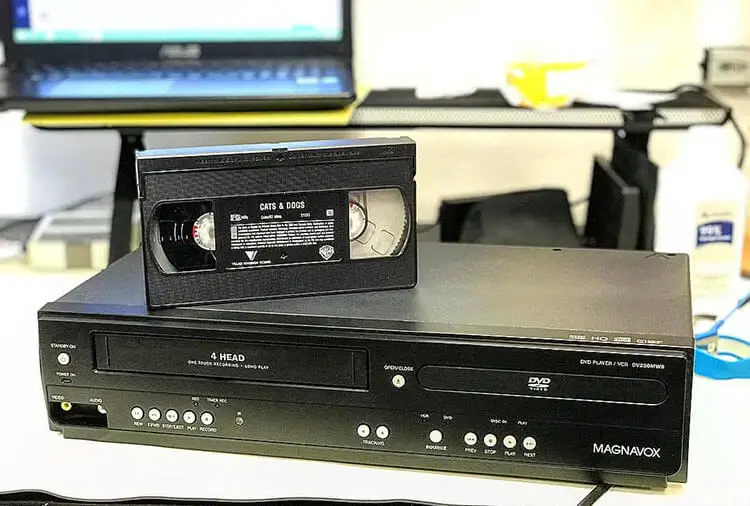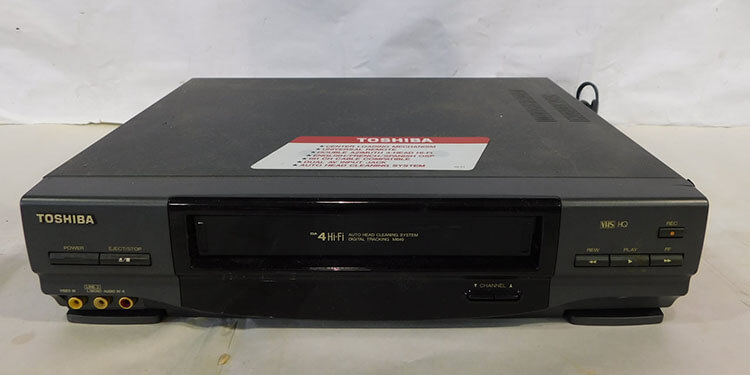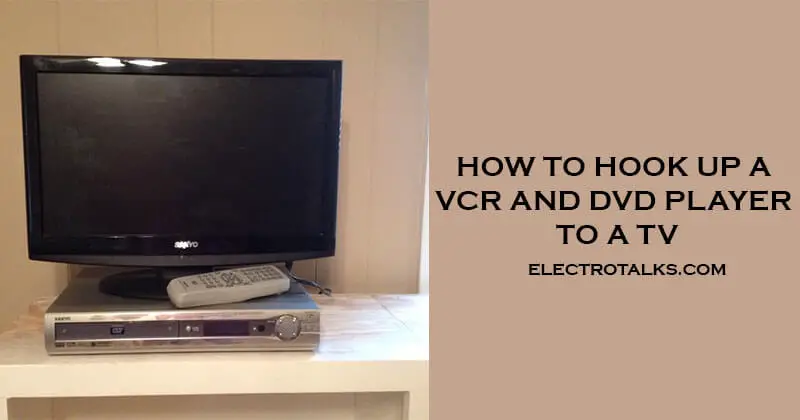“As an Amazon Associate, I earn from qualifying purchases. Without Any Extra Cost to You!”
Digital boxes allow us to hook up a Vcr and Dvd player in an easier way to a TV. Though you might feel it is one of the toughest jobs to hook them up both. But in reality, you can easily do this thing by following some smaller tasks.
At first, you need to make sure the Vcr and DVDs you are trying to hook up are compatible with each other. We are here to help you by showing you some easy tricks. Follow the tricks in order to get the best performance from your device.
Set Up Required For Hooking Up A Vcr And Dvd Player To A Tv
Some things you need to observe before hooking up a Vcr and Dvd player with the television. Some of the keys sets up are mentioned below in order to finish this thing perfectly. Go through the section for a better idea.
- Check all the components of the Tv so that no incompatibility is found later.
- Make sure the Vcr and the Dvd are well compatible with the television. The modulator of these devices must be well capable of handling any kind of issue.
- Assure that the transformer of the device is properly working with the necessary setup.
- The temperature must be under control in order to hook them up.
- Do not ignore any error message shown by the devices.
- A stable internet connection along with a proper electric setup is very much needed.
- Look for standard inputs like HDMI, RCA, and S-Video on the TV’s backports.
- Connect the proper table to the output on the back of the DVD player or other device and the input on the back of the TV.
- Check if the colors on an RCA cable match. The right audio is represented by red, the left by white, and the video by yellow.
Precautions To Be Maintained To Hook Them Up

In this section, we would like to suggest you take some initial steps before hooking up a Vcr and a DVD. The steps are mentioned below:
1. Check The Modulation Of Your Device
Modulation is characterized as a modification of one or more properties. When a television gets numerous signals, overmodulation occurs. The signal that your device must receive must be highly specific.
The carrier signal is the only place where the information is present in an encoded form. It is therefore challenging to decrypt the original data when receiving several signals. The demodulator must be ready to identify the specific signal it is looking for.
Every brand has a unique demodulator. A modulator, for instance, cannot be utilized with all devices. Look at the modulator’s precise name on your device. then buy that specific modulator. Therefore, pick your modulator carefully.
2. The transformer Must Be Active
The transformer’s primary function is to supply voltage to the CRT. You must realize that the transformer isn’t operating effectively if the CRT isn’t functioning precisely. You will then notice that your TV is not on.
Despite being turned on, you will hear a loud roar. The frequency ranges from 50 to 60 Hz. The sound lasts for longer than thirty minutes. You must therefore keep an eye out to see if the same thing is occurring or not.
The fix for this problem is to swap out the transformer in your device. This treatment could be pricey. If you believe you will continue to use the current transformer, you can hire a professional to fix it.
As a result, you must ensure the transformer is working well with your device.
3. Electrical Connections Should Be Stable
Electrical connections should have to be stable in order to perform such tasks. An electrical failure can harm both DVD and VCR. So you must have to maintain a stable connection.
You won’t hear any popping or clicking noises in these situations now. The major cause of any buzzing or humming sounds you hear is a defective signal that the electrical system is supplying.
The electrical system may be broken for several reasons. For instance, the excess current enters your device’s electrical circuitry when it does not go via the ground.
A resistor that prevents excess electricity is provided by Samsung televisions. When the current is significantly higher, though, it emits a high-pitched sound. You will hear a buzzing or humming noise as a result.
Key Steps To Be Followed For Hooking Up A Vcr and Dvd With The Television

In this section, we will go one by one in order to find the easiest solution to hook up a Vcr and Dvd with your television. So, let’s go.
Step I: Check The Input Connections Of Your Device
Check the inputs on your TV. There will be a number of ports on the back or side of your TV to which you can connect cables. Red, yellow, and white circular ports on RCA devices. These are most typically found on vintage video game consoles, DVD players, and VCRs.
A flat, broad input for high-definition gadgets is called HDMI. There might be more than one of these on your TV. A spherical piece of plastic with several tiny holes in it.
For older equipment, such as VCRs or vintage DVD players, this input is perfect for obtaining the best quality. If you’re connecting a DVD player or VCR, you’ll need the red and white cords from the RCA cable set since S-video doesn’t provide sound.
Step II Check The Output Connections Of Your Device
The sort of connection you utilize will depend on the options you have for connecting your devices to your TV. Have a look at the output connections of your device.
- DVD player: Usually an RCA, S-video, or HDMI connection.
- VCR – s-video or RCA.
- Cable box– some vintage cable boxes offer RCA outputs HDMI
Step III Make Sure You Have Done The Cabling Perfectly
If HDMI is available, you should utilize it to connect your DVD player. Use RCA or s-video cables if not. If necessary, use s-video here rather than for the VCR because your DVDs will be of greater quality than your VHS tapes.
VCR – For your VCR, you should use either RCA cables or s-video cables. Typically, this will depend on the DVD player you’re using. A coaxial cable and an HDMI cable are required to connect the cable box to the TV and the cable service, respectively.
Step IV Connect The Dvd Player
Before you may connect your devices, your TV needs to be turned off and removed from its power source.
- The red and white RCA cables are also required if you’re connecting your DVD player using an s-video cable.
- The red and white RCA cables must also be plugged into the red and white ports on the rear of the DVD player if you’re using an s-video cable.
- You might be able to use your receiver’s inputs rather than those on your TV if you use a receiver for your TV.
- Connect the DVD player’s power cable to an outlet. This might be a wall outlet or a surge protector outlet.
Step IV Connect The Vcr Player
- You’ll also need the red and white RCA cables that are generally included with the VCR if you’re using an s-video cable. If not, simply utilize all three RCA cables (the red, white, and yellow cables).
- Make sure the yellow RCA cable is also connected to the VCR if s-video cables are not being used.
- You might be able to use your receiver’s inputs rather than those on your TV if you use a receiver for your TV.
- You’ll also need to attach the cable to the back of the DVD player if it has come loose from the device itself.
Well, you have gone through the main points already. Now it is time for us to answer some of the most frequent answers. This section will help you to know the vital answers that are yet to be solved properly.
Frequently Asked Questions
Can You Hook Up A Vcr To A Flat Screen TV?
In that case, we have to answer it positively. Most recent TVs and VCRs can connect, though you might need to purchase a few cables. Coaxial cables have been utilized by VCRs for a while. Those are essentially the same cables that are used to connect a cable or satellite box to your wall.
What Can You Do With Old Vcr Players?
Best Buy has a trade-in program for more sought-after devices and will happily accept back used VCRs and many other household electronics for free. Each household can submit up to three things every day.
Conclusion
The article aims to provide a detailed understanding of how to hook up Dvd and Vcr to your television. Hopefully, you have solved your problem and successfully accomplished the task. We will meet again with another article. Good Bye!
